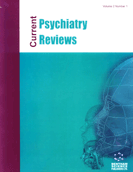Abstract
In these last years, emotions and feelings, such as attachment, pair and parental bonding and even love, typical of higher mammals, neglected for centuries by experimental sciences, have become the topic of extensive neuroscientific research in order to elucidate their biological mechanisms. Several observations have highlighted the role of distinct neural pathways, as well as of monoamines and neuropeptides, in particular oxytocin, vasopressin and opiates, but this is only the beginning of the story. Love, the most typical human feeling, can be viewed, according to a neurobiological perspective, as a dynamic process that represents the results of different components probably subserved by distinct neural substrates at different times. As such, some steps can be identified, in particular its beginning, that is to fall in love, which is the mechanism of attraction, followed by the stage of attachment, which, in some cases, can be lifelong. This paper will review the available data regarding the process of attraction and attachment, and will draw some general speculations of the author, trying to address the question of what is love from a neurobiological point of view.
Keywords: love, attraction, attachment, neurotransmitters, serotonin, neuropeptides, oxytocin, vasopressin, neural systems
 37
37

